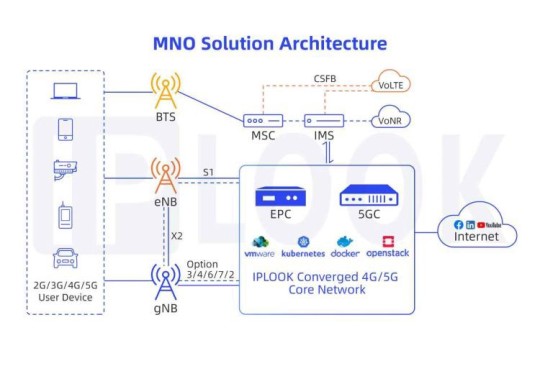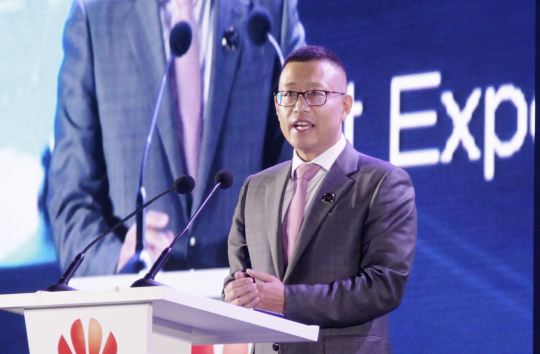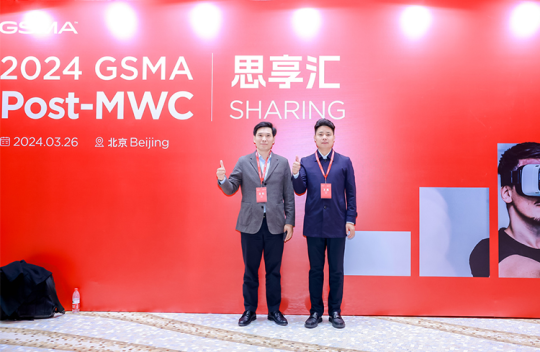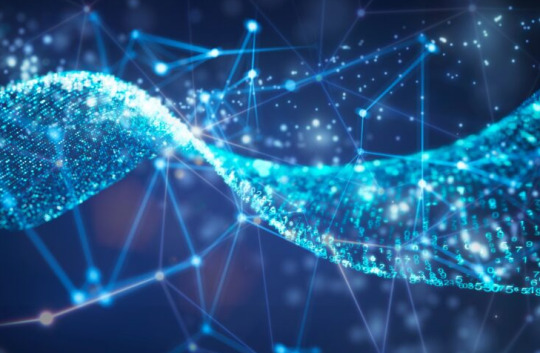#GSMA
Text
How does a UE successfully use VoLTE services with MNO network?

Based on an MNO project in Africa that IPLOOK is actually delivering, we have summarized some experiences and steps on how a UE can successfully use VoLTE services with the help of GSMA, which we share with you for free as follows:
Step 1: A mobile device power-on
Step:2: Scan all supported frequency band
Step 3: Try to register on scanned MNO networks
Step 4: Try to attach with default bear QCI=9 for Internet service
Step 5: Try to attach with dedicate bear QCI=1 for VoLTE service

How do MNOs become qualified for providing VoLTE services?
As a crucial role in this process, a mobile network operator (MNO) is a telecoms entity that controls all the elements including radio spectrum allocation, wireless network infrastructure and other necessary components, providing wireless voice and data services to mobile phone subscribers.
A new MNO needs to become a GSMA member before launch.The application documents include IR.21, IR.85..etc. The MNO must apply and pass GSMA testing for certificate of VoLTE capability. The baseline document is GSMA IR. 25.
PS: GSMA will update the membership list globally.
IPLOOK flexible MNO solution

IPLOOK can provide a fully virtualized MNO solution for operators to simplify the network structure and reduce the O&M costs, helping TIER 1, medium and small-sized operators to achieve network modernization.
Contact us for more info!
1 note
·
View note
Text
Expo Stand Services is a popular name in the exhibiting industry and has been the top choice of exhibitors for years. So, if you are planning to exhibit at MWC 2024, connect with us at https://bit.ly/44ZJSVp
#MWC24#mwc#industry#GSMA#expostands#ATTENTION#export#exhibition#tradeshow#tradeshowbooth#boothrental#displaybooth#displayrental
0 notes
Text
The Apple story I wish I'd had time to write this week: The company caves on RCS
'
After Apple killing off the Lightning connector on the iPhone (if only they would remember to do likewise with their input devices), the story I’ve most looked forward to writing about that company would involve it raising the lowest common denominator for Android-to-iPhone text messaging from its current miserable and unencrypted state.
So of course that news broke, in the form of an Apple…

View On WordPress
#getthemessage#chat features#encryption in transit#end to end encryption#green bubbles#GSMA#iMessage#MMS#RCS#SMS#texting#texts
0 notes
Text
Statement from the GSMA on International Day of Family Remittance 2023.
Mobile Money International Remi1ances – Saving the Day Amidst Economic Woes.
As the world began to recover from the economic ramifications of COVID-19, 2023 saw further turmoil and even recession. In fact, the OECD projects global GDP growth in 2023 to be 2.7%, which is the lowest annual rate since the global financial crisis, except for the 2020 pandemic period. This low growth is expected into 2024 with projections for next year being 2.9%. Soaring food and energy costs have fuelled the highest rates of inflation, with Low-and middle-Income countries (LMICs) being the hardest hit. However, mobile money can offer customers a secure, accessible and affordable option for millions of families struggling to earn a livelihood.
The mobile money industry, now with over 1.6 billion registered customers, was able to move 21 billion worth of interna6onal remiYances (IMT) in 2022. This represents a 28% Year-on-Year growth. According to the World Bank, total remiYances transferred in 2022 to LMICs amounted to US$626 billion and it is projected that by 2030 US$5.4 trillion in remittances will be sent to LMICs. Interna6onal remiYances are here to stay! With an average fee of 3.73% to send $200, using mobile money is 37.9% cheaper than the global average remittance cost.
Challenges
Despite the significant benefits of mobile money for digital remittance and financial inclusion for migrant families, several challenges s6ll hinder its widespread use. Foreign exchange controls present a huge challenge, not just to mobile money driven IMT, but for all forms of international remittances. A significant number of countries still have restrictions on outward remittances and permit only inward remittances. There has been little to no change on the issue over the past several years.
Regulatory harmonisation is also an obstacle. As it stands, the disparities of KYC regulations across different countries creates complexities in meeting necessary AML/CFT checks for cross border money transfers. The lack of clear regulatory frameworks for IMT makes it difficult for mobile money providers to determine regulatory requirements for mobile money driven IMT services. Some countries are yet to drai provisions for provision of international money transfer services for non-tradi6onal IMTOs. Without a framework in place, regulators lack a blueprint against which they can issue approvals.
Despite the significant uptake of mobile money in LMICs, some migrant families s6ll have cultural preferences or trust-related concerns that favour informal, cash-based transfers. Cash is, in many regards, the biggest competitor of digitally driven alternatives for IMT. More can still be done to drive financial literacy through shared responsibility. While significant strides have been made to narrow the gender gap, the journey is s6ll far from over.
According to the 2021 MobileRemit Africa report, women comprise about half of all remittance senders (100 million). They are digitally excluded in LMICs and particularly in rural areas. This hinders further growth and access for families that depend on these remittances for basic needs.
Policy Considerations
As we commemorate the International Day of Family Remittances this year, we urge stakeholders to take into considerations the recommendations outlined below in order to tap into the full potential of mobile money driven international remittances.
Driving an enabling environment Policy makers should aim to create an enabling environment for driving the adoption
of digital financial services. Over 15 years since its inception, several countries are yet to adopt a non-bank-led approach to mobile money. Compared to traditional banking, digital financial services are shall in their formative years and shall need to be nurtured. Regulations should focus on growing the sector sustainably. Regulators should pay close attention to affordability by ensuring cost of compliance and related fiscal policies are aligned with financial inclusion aspirations. Additionally, regulators should aim to provide clear guidelines for licencing of interna6onal remittances based on global best practices. Exclusivity clauses restric6ng mobile money providers and other non-tradi6onal IMTOs need to be reviewed.
Harmonising regulatory frameworks There is plenty of room to harmonise regulatory frameworks across different countries. This harmonisa6on should seek the alignment of, at least customer due
diligence checks, to ensure AML/CFT concerns are addressed. Regional knowledge exchange can beneficially lead to harmonization of requirements. Regulators may consider allowing for mutual recognition of cross-border sandboxes as a first step.
Regional trading blocs and other regional formations present low hanging fruits.
Adopting a risk-based approach With increased globalisation, regulators should adopt a risk-based approach to mobile money international remittances. They should explore a balanced approach against their legitimate needs to manage capital flows, ensuring consumer protection, crime preven6on and to act within existing capacity constraints.
Improve financial literacy Educational initiatives that promote financial literacy and raise awareness about the benefits and usage of mobile money are essen6al in addressing informality challenges. Financial literacy is not a partisan issue. It requires a multi-sectoral approach to be effectively addressed.
As countries navigate economic headwinds globally, affordable international remittances are the only means of sustenance for many households in LMICs. Governments need to make a
concerted effort to broaden the scope of domestic services to include seamless and affordable IMT services. Mobile money is uniquely posi6oned to support this worthy cause.

#international day of family remittances#16 june#statements#financial inclusion#familyremittances#GSMA
0 notes
Text
Indosat dan GSMA Jalankan Program Digitalisasi Konservasi Mangrove di Kaltara - Gosulsel
TARAKAN, GOSULSEL.COM – Indosat Ooredoo Hutchison (Indosat) berkolaborasi dengan Global System for Mobile Communication Association (GSMA) dalam upaya meningkatkan ketahanan lingkungan dan ekonomi Indonesia dengan pengembangan mitigasi berbasis seluler. Kolaborasi ini merupakan salah satu i...
http://gosulsel.com/2023/05/26/indosat-dan-gsma-jalankan-program-digitalisasi-%e2%80%8bkonservasi-mangrove-di-kaltara/
#GSMA #IndosatOoredooHutchisonIOH
0 notes
Text
Mobile money transactions exceed expectations, reaching $1.26 trillion in 2022 as per GSMA

Mobile money transactions exceed expectations, reaching $1.26 trillion in 2022 as per GSMA
The GSMA’s State of the Industry Report on Mobile Money 2023 shows adoption rates are even more significant than expected, with registered accounts, transaction values, and deployments exceeding industry predictions.
April 18, 2023, London - Mobile money services are growing faster than predicted around the globe, as digital services continue to rise in popularity, according to the GSMA’s annual ‘State of the Industry Report on Mobile Money 2023’, published today.
The report, published annually by the GSMA and funded by the Bill and Melinda Gates Foundation, demonstrates that rates of adoption are even quicker than expected, with the number of registered mobile money accounts growing by 13% year on year, from 1.4 billion in 2021 to 1.6 billion in 2022. While it took the industry 17 years to reach the first 800 million customers, this is extremely significant growth as it has taken just five years to reach the next 800 million.
In 2022, daily transactions via mobile money reached $3.45 billion, exceeding the $3 billion amount predicted in 2021. The total transaction value for mobile money grew by an incredible 22% between 2021 and 2022, from $1 trillion to around $1.26 trillion.
However, in many areas worldwide, more work is still needed to help give underserved communities access to safe, secure, and affordable financial services. With 1.4 billion people worldwide remaining unbanked, the GSMA Mobile Money Programme is working with mobile operators and industry stakeholders worldwide to create a robust mobile money ecosystem, increasing the relevancy and utility of these services and ensuring their sustainability.
The 2023 report shows there are now 315 live mobile money deployments across the globe, with peer-to-peer (P2P) transfers and cash-in/cash-out transactions still among the most popular use cases. Bill payments using mobile money grew by 36% year-on-year – faster than any other use case – and the industry continues to focus on use case diversification, playing an important role in digitizing economies.
Pandemic-driven uptake
As the world increasingly moves on from COVID-19, mobile money services have continued to show resilient growth that was instigated during the pandemic. Up to 400 million accounts were added during the pandemic alone. This rapid uptake is largely due to the technology’s role in enabling millions of people across low- and middle-income countries to access digital financial services. This upward trend continues, with the number of accounts active on a 30-day basis also growing by 13 percent year-on-year to 401 million in 2022.
The report also shows that, during 2022, mobile money-enabled international remittances grew by 28% year on year – to $22 billion. During the pandemic, many diasporas sent more funds via mobile money to friends and family than ever before. As a result, international remittances grew significantly in both 2020 and 2021, as many senders favored mobile money for its efficiency, speed, safety, and cost-effectiveness. The trend continued in 2022, albeit at a slower rate.
Closing the gender gap
Mobile money is also continuing to drive financial inclusion for the world’s unbanked, particularly amongst women in rural communities, where access to mobile money can play a transformational and empowering role.
However, according to the latest GSMA data, there is still a mobile money gender gap that has shown signs of widening over the last year, particularly in India, Indonesia, and Pakistan. Mobile phone ownership is one of the main drivers of the mobile money gender gap, however, a number of other barriers and cultural norms also prevent women from adopting mobile money. As a result, women in low- and middle-income countries are currently 28% less likely than men to own a mobile money account.
Growing agency networks
The number of mobile money agents also increased significantly last year, with a 41% increase between 2021 and 2022. The overall number of agents went from 12 million in 2021 to 17.4 million in 2022. The number of active agents increased by 25% to 7.2 million in 2022. A lot of this growth came from Nigeria, where a more liberal regulatory regime meant an increase in mobile money providers. Agents continued to prove to be an invaluable part of mobile money services and were responsible for two-thirds of all cash-in transactions in 2022.
“It is promising to see the continued growth of mobile money worldwide. Mobile money has afforded millions of unbanked and underserved people in low- and middle-income countries access to digital financial services, for the first time,” said Max Cuvellier, Head of Mobile for Development, GSMA. “However, even with this significant growth, there is still a long way to go to bring those services to over a billion people worldwide who remain unbanked. The GSMA is therefore encouraging governments worldwide to keep developing the enabling policies that can support mobile money deployments and further boost the growth of this crucial ecosystem. Doing so helps accelerate the digitization of national economies and build financial resilience, allowing communities to support themselves in uncertain times.”
To find out more, download the 2023 State of the Industry Report on Mobile Money here
Read the full article
1 note
·
View note
Text
#Huawei impulsará cooperación con GSMA Latinoamérica para impulsar la transformación digital regional
#Huawei impulsará cooperación con GSMA Latinoamérica para impulsar la transformación digital regional
Huawei y GSMA Latinoamérica anunciaron durante los dos eventos regionales insignia de la industria de las telecomunicaciones, Gitex y Huawei Connect Dubai, su compromiso para trabajar juntos en América Latina y el Caribe, con el fin de promover la transformación digital, aumentar la adopción de servicios de telecomunicaciones, y reducir la brecha en el despliegue de redes móviles (Fuente Huawei…

View On WordPress
0 notes
Text
Ericsson, Google shows how multiple network slices on a single Android 13 device can boost consumer and enterprise applications
Ericsson, Google shows how multiple network slices on a single Android 13 device can boost consumer and enterprise applications
Ericsson and Google continue to push the envelope on network slicing, bringing the full range of benefits of 5G one step closer to consumers, by demonstrating multiple network slices on a single device that cater to both consumer and enterprise applications.
In their latest collaboration, the ecosystem partners have demonstrated support on Ericsson network infrastructure for multiple slices…

View On WordPress
0 notes
Text
Huawei: Digital transformation will be faster in post-covid Caribbean, LatAm
Huawei: Digital transformation will be faster in post-covid Caribbean, LatAm
Above: Micheal Xue, Vice President, Huawei Latin America and the Caribbean. Photos by Gabriel Gonzalez Torres, courtesy Huawei.
Digital technologies could play a key role in facilitating the recovery in the aftermath of the COVID-19 pandemic, experts said at a regional industry summit in Cancun, Mexico, held from June 23 – 24, and organized by Huawei with the support of International…

View On WordPress
0 notes
Text
Oppo pledges to achieve carbon neutrality across its operations by 2050
We are living at a time when nearly 57% of the global population is using mobile internet according to the 2022 GSMA. As such the environmental impact of smart devices cannot be ignored. In 2023, OPPO has pledged to achieve carbon neutrality across its global operations by 2050.
Renowned for its diverse range of smart devices, from smartphones to wearables and cutting-edge XR devices, OPPO is…

View On WordPress
0 notes
Text
IPLOOK Leaders Attended GSMA Post-MWC Sharing to Discuss Industry Insights

IPLOOK, a leading provider of end-to-end mobile core network solutions, announced that its CEO and Deputy CEO attended the GSMA Post-MWC Sharing held in Beijing on March 26th.
This exclusive event brought together industry leaders to share insights and perspectives following the successful conclusion of MWC Barcelona in February. The Sharing provided an invaluable platform for telecom leaders to engage in in-depth discussions on the latest trends and developments in the telecommunications sector. Key topics included 5G, Open Gateway, network infrastructure, and potential collaboration opportunities among GSMA members.
As a GSMA Member, IPLOOK actively contributes to the development of the telecom ecosystem and aims to shape the mobile future.
"We are honored to have been part of the GSMA Post-MWC Sharing event and to exchange ideas with fellow industry leaders," said Tom Lyu, CEO of IPLOOK, "As we continue to build upon the momentum generated at MWC Barcelona, we look forward to forging new partnerships and driving innovation in the telecommunications landscape."
0 notes
Text
Houston Texas Appliance Parts: MWC23: GSMA Introduces New Era of Earth Computing
Houston Texas Appliance Parts
MWC23: GSMA Introduces New Era of Earth Computing
by Houston Texas Appliance Parts on Tuesday 07 March 2023 03:21 PM UTC-05
BARCELONA, Spain—Following the opening of the first keynote of Mobile World Congress 2023 (MWC23), titled "Vision of an Open Future," GSMA Director General Mats Granryd, Telefonica CEO José María Álvarez-Pallete and Orange CEO Christel Heydemann outlined new strategies for the mobile industry based on open infrastructure, APIs and new ways to connect the global networks, focusing on the concept of Earth Computing.
During the keynote, GSMA's Granryd outlined the current state of the mobile industry, focusing on the immense benefits that networks and connected technologies are bringing to consumers, enterprises and public services, as well as on how operators have been able to deal with the immense surge of traffic the past three years without significant disruptions.
GSMA Director General Mats Granryd at MWC23 (Source: Pablo Valerio)
Following the keynote, Granryd unveiled GSMA's new industry-wide initiative called GSMA Open Gateway, a framework of universal network APIs that enable developers to launch new services accessing core features of operators' infrastructure and traffic—an initiative that Granryd believes could be the next step to improving collaboration between industries and stakeholders in the global wireless market.
"By applying the concept of interconnection for operators to the API economy, developers can utilize technology once, for services such as identity, cybersecurity or billing, but with the potential to integrate with every operator worldwide," Granryd said. "This is a profound change in the way we design and deliver services. In 1987, representatives from 13 countries worked together to harmonize mobile voice services and enable roaming. I believe that 35 years on, GSMA Open Gateway has the potential to deliver a similar impact for digital services."
The new Open Gateway initiative launches with eight universal network APIs, including SIM Swap, QoD, Device Status (Connected or Roaming Status), Number Verify, Edge Site Selection and Routing, Number Verification (SMS 2FA), Carrier Billing (Checkout) and Device Location (Verify Location), according to the GSMA. The initiative plans to launch further APIs throughout this year.
The APIs are defined, developed and published in CAMARA, the open-source project for developers driven by the Linux Foundation and the GSMA.
After the initial unveiling of the GSMA Open Gateway, Telefonica CEO Álvarez-Pallete, who is currently serving as chairman of the GSMA, outlined the benefits of global connectivity and how, by increasing collaboration between industries and stakeholders, the global wireless market can enter into a new era, which he called "Earth Computing."
"This is the time to merge the best of the earth with the best of the cloud," Álvarez-Pallete said during the keynote. "This is the time for collaboration between telcos, big tech and digital players to create a digital future with opportunities for all. Something as amazing as this has happened before.
"Not so long ago, in 1987, GSMA changed the world," he continued. "Now, the GSMA has over 1,100 members. Over 680 operators connect 5.5 billion people with voice, data and roaming services. Why not do it again? We can do it by remembering who we are. We created something unique. We were not afraid to radically transform connectivity to embrace mobility and computation and make it simple and universal, to make something [that is] very complex easy for customers and developers. That is the ambition behind Open Gateway: to create a common layer to expose network capability. To connect the earth and the cloud."
Telefonica CEO José María Álvarez-Pallete (Source: Pablo Valerio)
Álvarez-Pallete then went on to extol the initiative's critical role in eliminating the divide between mobile operations and cloud services—a crucial step to paving the way for next-gen concepts, such as Web3.
"GSMA Open Gateway will enable single points of access to ultra-broadband networks and provide a catalyst for immersive technologies and Web3—giving them the ability to fulfill their potential and reach critical mass," he said. "Telcos have come a long way in developing a global platform to connect everyone and everything. And now, by federating open network APIs and applying the roaming concept of interoperability, mobile operators and cloud services will be truly integrated to enable a new world of opportunity. Collaboration amongst telecom operators and cloud providers is crucial in this new digital ecosystem. The world would not be the same today if the GSMA had not done its job. … Today, we are ready to do it again. We are reinventing the GSMA. We are making things happen."
Next, Orange CEO Heydemann took the stage to discuss operators' challenges in this global, connected economy. She was adamant about the challenges operators are facing, especially in Europe.
"Over the past 10 years, the situation for European telecoms has become completely paradoxical," she said. "Our sector is dealing with contradictory requirements. According to PWC, 46% of telco CEOs think they won't make it another decade."
Heydemann made some strong comments about the vast investments that CSPs need to make to provide the best connectivity and faster networks—all while offering very competitive prices for consumers and, simultaneously, allowing internet companies and content providers to enjoy the benefits.
Without disclosing names, she blamed regulators and internet companies for expecting all the investment—over €600 billion ($640 billion) in the past 10 years—to come from the operators, making it difficult for them to share the benefits of the digital economy.
"Because of the massive network investments, over €600 billion in the last decade happened to be hard to monetize, and consumers expect to pay less and get more," Heydemann said. "Currently, telcos face pressure to reduce their capex while coping with exponential traffic growth, mainly coming from a handful of digital players. Five of the largest online traffic generators account for 55% of daily data traffic. It represents a cost of approximately €15 billion per year, paid by European operators. I truly wonder if this is what we had in mind 10 years ago for the future of our European digital industry."
Orange CEO Christel Heydemann (Source: Pablo Valerio)
This is where Heydemann believes Earth Computing can step up to meet the unique challenges that continue to negatively impact the global wireless market.
"In line with our new plan, called 'lead the future,' we must step aside and take a fresh look at our industry. … European telecommunication companies are committed to taking the future into their own hands, side by side, with an open, sustainable and collaborative approach," she said. "It's the concept of Earth Computing that José María talked about. We can make the earth talk and connect with the cloud in a simple way. … It's time to recognize that the telecom industry has been one of the greatest contributors to our economies with massive investments.
"Our telco industry is absolutely essential, and it is fast adopting the latest innovations," she continued. "So we must capture the full value of our services and the next generation of open networks. And we can't build our future alone. So I ask everyone here to step forward, not to lead the future but to lead our future."
At the end of the session, GSMA's Granryd reminded the audience about the challenges of connecting the remaining 3.6 billion people without access to mobile internet. He said that while there is coverage in most areas, many people cannot enjoy the benefits of digital connectivity due to the cost of mobile devices and, in many cases, lack of digital literacy. He believes that mobile stakeholders, internet companies and the public sector must act quickly to reduce the digital divide.
The post MWC23: GSMA Introduces New Era of Earth Computing appeared first on EE Times.

Pennsylvania Philadelphia PA Philadelphia
March 07, 2023 at 03:00PM
Hammond Louisiana Ukiah California Dike Iowa Maryville Missouri Secretary Maryland Winchester Illinois Kinsey Alabama Edmundson Missouri Stevens Village Alaska Haymarket Virginia Newington Virginia Edwards Missouri
https://unitedstatesvirtualmail.blogspot.com/2023/03/houston-texas-appliance-parts-mwc23.html
March 07, 2023 at 03:22PM
Gruver Texas Glens Fork Kentucky Fork South Carolina Astoria Oregon Lac La Belle Wisconsin Pomfret Center Connecticut Nason Illinois Roan Mountain Tennessee
https://coloradovirtualmail.blogspot.com/2023/03/houston-texas-appliance-parts-mwc23.html
March 07, 2023 at 05:41PM
from https://youtu.be/GuUaaPaTlyY
March 07, 2023 at 06:47PM
0 notes
Text
The GSMA Innovation Fund for Anticipatory Humanitarian Action
The GSMA Innovation Fund for Anticipatory Humanitarian Action
Deadline: 19-Jan-23
The GSMA is open to applications from non-profit organisations (including NGOs, INGOs, humanitarian agencies and social enterprises) as well as for-profit organisations (limited to commercially viable start-ups, SMEs and social enterprises with up to 250 employees).
By focusing on the important theme of anticipatory action the Fund will contribute towards the minimisation of…

View On WordPress
0 notes
Text
Mobile World Congress (MWC) to Be Held in Barcelona Until 2030, Says GSMA
Mobile World Congress (MWC) to Be Held in Barcelona Until 2030, Says GSMA
The Mobile World Congress, the telecom industry’s biggest annual gathering, will be held in Barcelona until 2030, extending its current contract by six years, organisers said Monday.
The event, which draws more than 100,000 people to Barcelona, has been held in Spain’s second largest city since 2006.
The existing agreement between the GSMA association that hosts the congress and local authorities…
View On WordPress
#barcelona#mobile world congress (mwc) to be held in barcelona until 2030 says gsma mobile world congress#mobile world congress 2022
0 notes
Text
Sanjeev Mansotra on Digital Revolution in Africa: Unveiling the Potential for Growth and Innovation

Africa, sometimes called the "dark continent," is currently experiencing a digital revolution that is altering how people live, work, and interact. The African continent is embracing the digital era and unlocking its potential for prosperity and creativity because of technological advancements and improved internet connectivity. According to Sanjeev Mansotra digital technology, including computers, applications, and machine learning, presents new possibilities for individuals, companies, and occupations. This shows that having access to the Internet in African nations boosts employment and lowers poverty.
The broad adoption of mobile technology has been one of the main forces behind this digital revolution. In Sub-Saharan Africa, smartphone use will rise to 87% by 2030 from 51% in 2022, predicts the Global System Operators and Manufacturers Association (GSMA) report "The Mobile Economy 2023," which was published on February 27, 2023. “By incorporating AI into banking, education, health care, and many other industries, Africa has a significant opportunity to make its mark on the digital revolution and advance the digital culture there”, asserts Sanjeev Gandhavraj Mansotra.
One such invention that is altering the financial environment in Africa is mobile money. Mobile money platforms have developed as a substitute for traditional banking services, making it possible for people to send and receive money, pay bills, and access financial services via their mobile phones. Traditional banking services are inaccessible to many Africans. Millions of formerly unbanked people now have access to financial services, boosting the economy and lowering poverty.
In Africa, the digital revolution is changing entrepreneurship and education. The education gap is closed, and African youth are given more power thanks to e-learning platforms and online courses. In industries including fintech, e-commerce, health tech, and agritech, African tech startups are on the rise, utilizing technology to address regional issues and raise living standards. As per Sanjeev Mansotra’s core education analysis African government must adopt the growing digital culture, whether it is about AI in education, banking healthcare, or fintech, the continent must educate itself with digital literacy as today’s era is completely transforming into digital aspects.
The digital revolution is also making it easier to access necessities like healthcare. To receive medical advice and consultations without having to travel, telemedicine platforms connect patients with doctors virtually. Bridging the gap between isolated people and healthcare experts is especially important in rural areas with few healthcare facilities.
Africa's digital revolution is not without its difficulties. Obstacles including the digital gap, a lack of infrastructure, and cybersecurity issues must be addressed. However, there is a tremendous opportunity for growth and innovation if firms and governments invest in digital infrastructure and regulations.
In Africa, the digital revolution is leveling the playing field, empowering people, and opening new avenues for social and economic advancement. As Africa uses technology to its advantage, it will soon dominate the digital economy and serve as a powerhouse for creativity and innovation. Africa's digital revolution is paving the way for a better future by creating a connected, thriving continent that is equipped to meet the challenges of the twenty-first century.
#education#sanjeev mansotra#technology#digital revolution#digital economy#innovation#digital growth#growth#sanjeev#mansotra#africa
2 notes
·
View notes